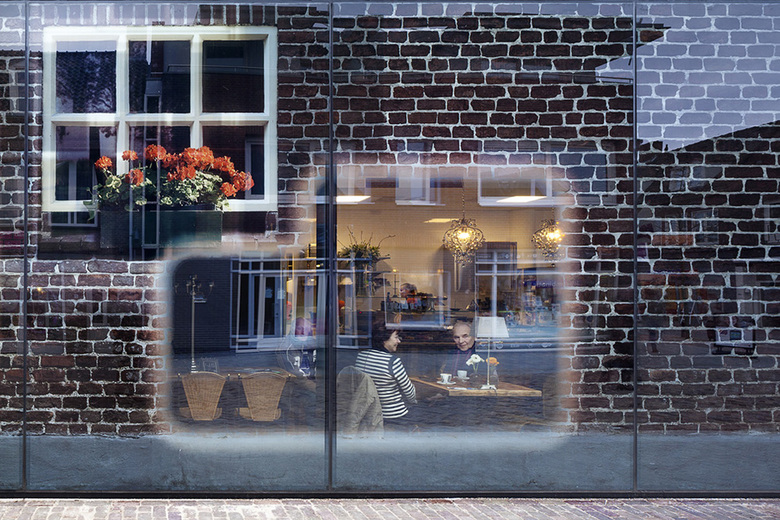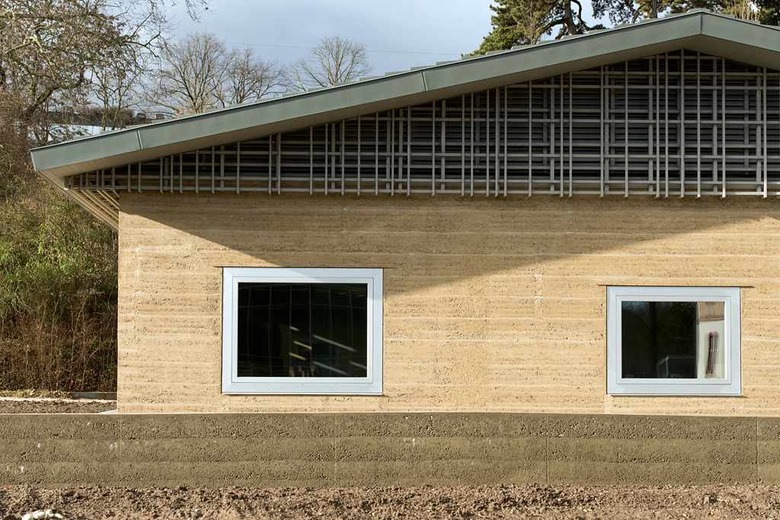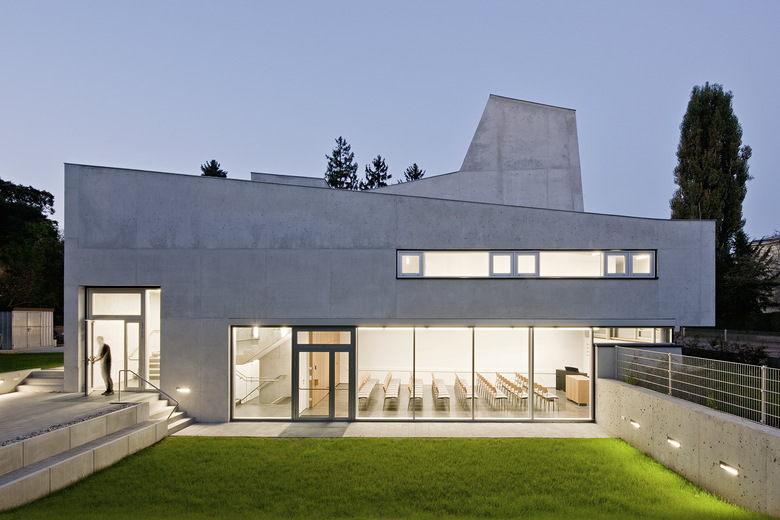Learning from BAU Blog
This week, building design and construction professionals head to Munich for BAU 2015, the "world's leading trade fair for architecture, materials, systems." Here we highlight a few of BAU Blog's "Team Building" and "Talks About Tomorrow" features.
As a means of getting attendees ready for BAU 2015, the BAU Blog dives into some of the themes and personalities that will be a part of the trade fair. The two main categories of presentation are Team Building, which are transcribed interviews with architects and the building trades on specific projects, and Talks About Tomorrow, which are video interviews with three leading lights in architecture and urban planning. Respectively these series draw attention to the interactions of team members during the design and construction process, and inquire about the future of building. Excerpts from three Team Building posts and short clips from the three Talks follow, with links to the full features provided.
A Farmhouse Made of Glass
Glass Farm
Schijndel, the Netherlands
Architect: MVRDV
Facade Consultant: Brakel Atmos
Can you share little anecdote from the project?
Gijs Rikken (MVRDV): This little anecdote is something that seems irrelevant but made a big impact on the design. At a certain time, we discussed the minimum width of the silicon seams on the outside of the building. What width did they need to be? Why were they so wide now? They were a full 25 mm at that time, which is quite narrow already of course, but they broke up the overall image nonetheless and we needed to minimize them. Brakel Atmos replied that to be able to lock the glass plates into place, someone needed to be able to reach inside of the gap between two glass plates with his fingers, grab hold of a little steel plate and twist it 90 degrees. This manual procedure defined the 25 mm widths of the gaps and therefore the silicon seam that would be the finish of that gap. So we asked if there was someone around who had thinner fingers, maybe smaller hands? We wanted 20 mm and asked Brakel Atmos if that would be possible. They were hesitant at first, but then they found a way in which a worker with small hands could manage it. And now the seams are 20 mm and they look fantastic!
Bart van Langen (Brakel Atmos): After determining the details, it turned out to be that the lining of the seals had to blend together smoothly on the inside as well on the outside. Because of the glass thickness this was almost impossible to do. In order to grant this wish as much as possible, Brakel Atmos engineered a new profile that could be applied at every possible angle.
Read the whole interview and learn more about the project on the BAU Blog.
Sustainable Building with Wood and Rammed Earth
Lehmhaus Merian Gärten
Basel, Switzerland
Architect: Barcelo Baumann Architekten
Manufacturer: Lehm Ton Erde Baukunst
What was the brief and what solution did you come up with?
Jordi Barcelo (Barcelo Maumann Architekten): A design for a building with education and training facilities was needed for the agricultural and environmental education projects at Merian Gardens. The requirement was that it should be multi-functional and of an eco-friendly construction. The new one-story earth building we proposed echoes the surrounding listed barns in that it has a solid ground course as a main theme on the facade. Four different spatial volumes, containing the infrastructure, enclose a large hall in the center. Independently usable entrances are located on the two narrower sides of the building; on the long sides the large glazing units can be opened, functioning like wide doors to the private courtyard and the planting areas beyond. The roof, with generous overhang and only a gentle pitch, spans across the four volumes to create a unified overall structure. The roof soffit, clad with a three-dimensional grid of wood with a glazed finish, continues in the central space, thus connecting internal and external space. A characteristic feature of this new building is the combination of traditional materials and new techniques to produce a contemporary, sustainable and eco-friendly building.
Martin Rauch (Lehm Ton Erde Baukunst): As the building was a combination of timber and earth, fast construction time on site was important, so that we could get the large, overhanging roof on as quickly as possible. Tha's why we opted to prefabricate the components. We were able to produce the rammed earth components in our factory, independent of weather influences. Assembly on site was therefore very quick and we were able to keep to the very tight time schedule.
Read the whole interview and learn more about the project on the BAU Blog.
A Rock out of Concrete
New Apostolic Church
Vienna, Austria
Architect: Veit Aschenbrenner Architekten
Manufacturer: TECHNOpor Dämmbeton
Were there any particular aspects you had to take into account when using the concrete on site?
Susanne Veit-Aschenbrenner (Veit Aschenbrenner Architekten): We had to be very careful with the material to achieve a good quality on the exposed surfaces. With this material, all the factors, e.g. shuttering, reinforcement etc. have to be tuned perfectly to each other. Because of the absorbing effect of the TECHNOlith insulating concrete, strong vibrators are required for compaction. That´s how we achieved the desired limestone look and ensured the reinforcement was properly covered. After a longer striking time, the walls have to stay covered up to prevent rapid drying out.
Wilhelm Salzer (TECHNOpor Dämmbeton): Because of the building geometry (sloping wall behind the altar and offset concrete floors) and the finish required on the exposed concrete surfaces, everybody had to take great care – the building firm, the structural engineers, the shuttering manufacturers and us, too – when we were supervising the concrete work on site.
Read the whole interview and learn more about the project on the BAU Blog.
Rethinking Tomorrow
Interviewed inside his B10 "Active House," German engineer and professor Werner Sobek speaks about energy- and resource-efficiency. Watch the short version of the interview (in German with English subtitles) with Werner Sobek:
Watch the full 25-minute-interview (in German only) here.
A Relationship in Three Dimensions
Austrian architect Dietmar Eberle (Baumschlager Eberle) speaks about the social dimensions of architecture and how buildings could offer users new freedom. Watch the short version of the interview (in German with English subtitles) with Dietmar Eberle:
Watch the full 25-minute-video (in German only) here.
Cities as Places of Renewal
Swiss architect and urban planner Fabienne Hoelzel (Fabulous Urban) speaks with Swiss-Architects editor Inge Beckel about "intelligent urbanization" and creating quality environments for everyone. Watch the short version of the interview (in German with English subtitles) with Fabienne Hoelzel:
Watch the full 20-minute-video (in German only) here.



